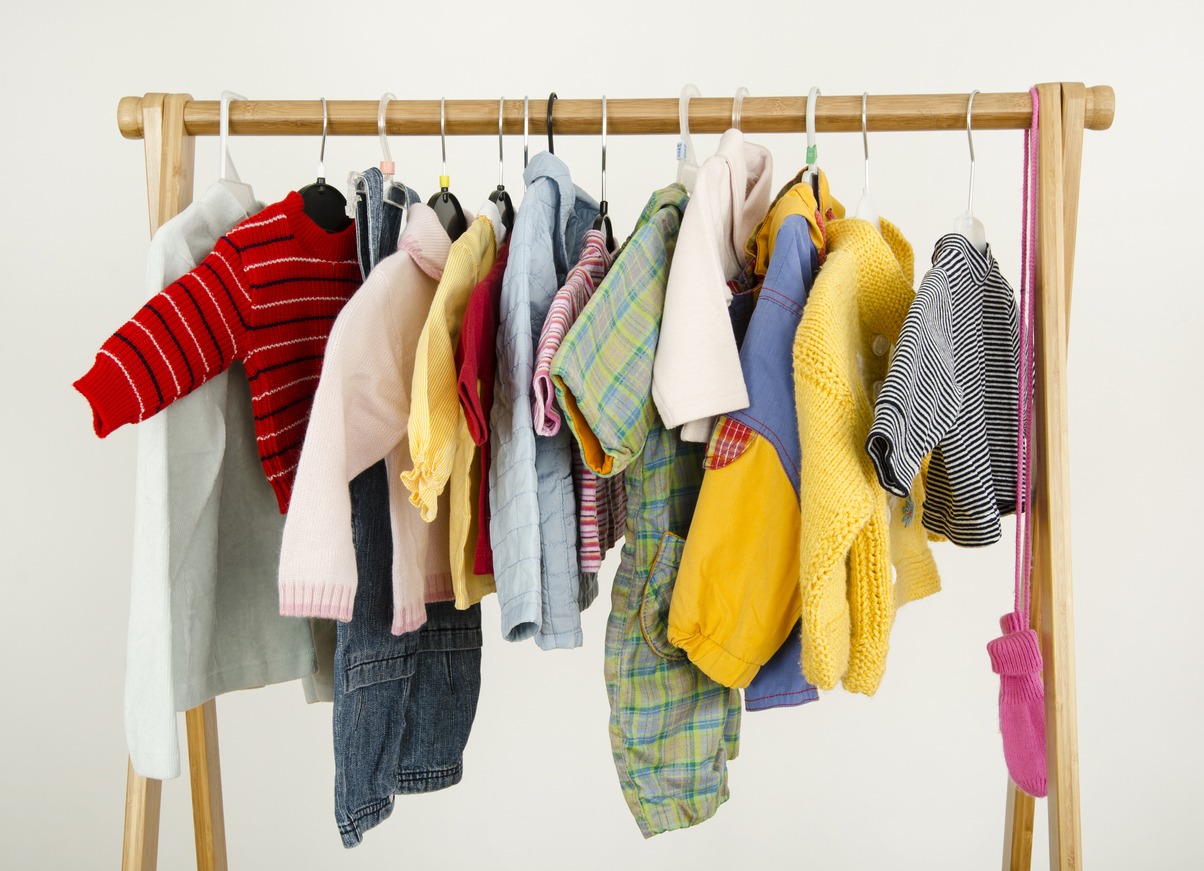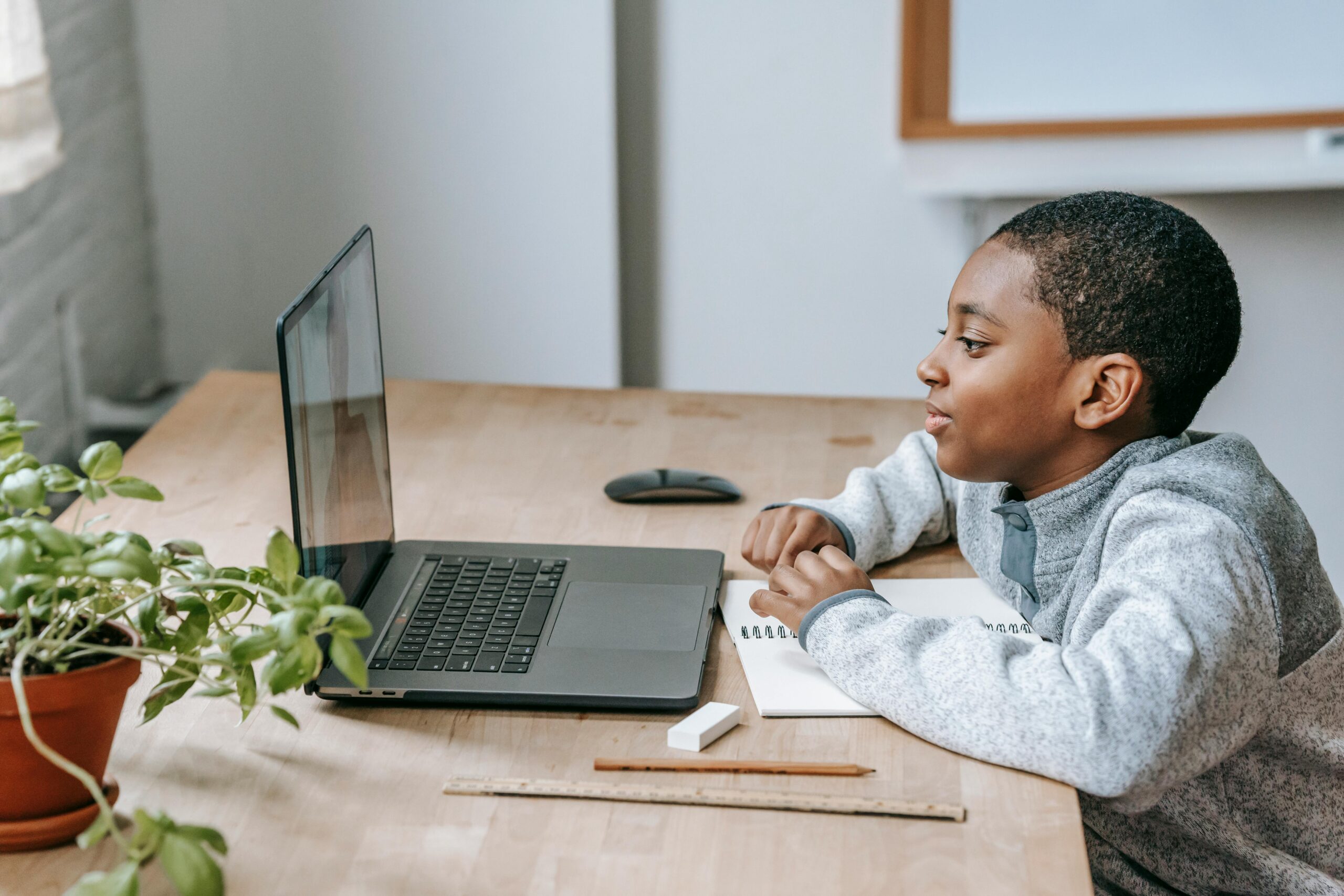How Effective Is Art Therapy for Children?

Evaluating the effectiveness of art therapy for children reveals how this creative approach aids in emotional regulation and mental health improvement. Structured artistic activities can significantly reduce anxiety and boost self-esteem, particularly in children with special needs or those who have experienced trauma. Group sessions further enhance social interactions and emotional regulation. But what specific techniques make art therapy effective, and how do children express their complex emotions through art? Let's delve into these aspects to understand the transformative power of art therapy.
Understanding Art Therapy
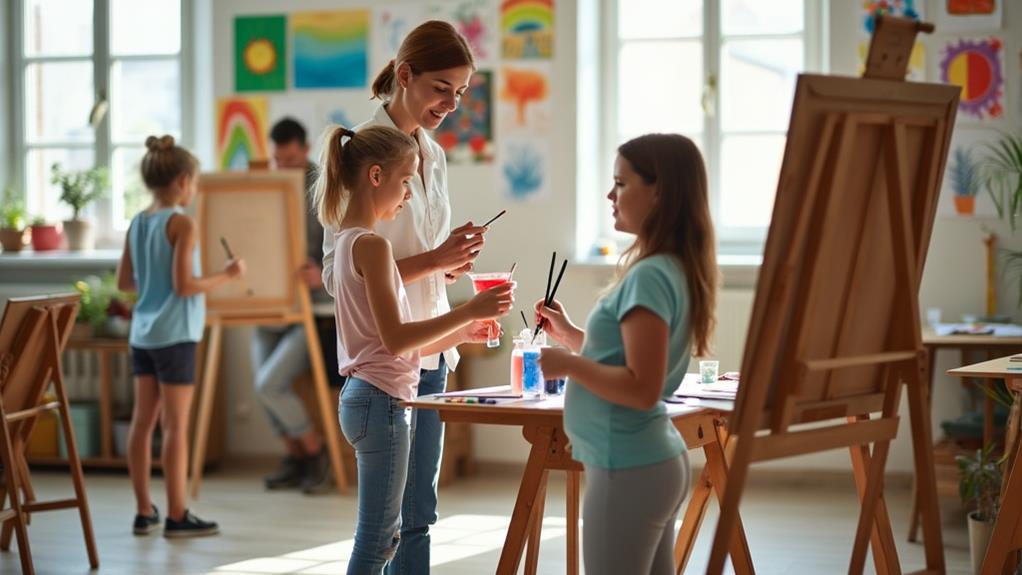
Art therapy leverages creative processes to aid children in expressing their thoughts and emotions, thus enhancing their mental health and social skills, regardless of their artistic ability. Through creative expression, children can navigate and articulate complex feelings, building emotional resilience. This therapeutic approach is particularly beneficial for those facing psychosocial challenges, providing a structured yet flexible environment for exploring their inner worlds.
During art therapy sessions, children can work through their emotions and develop coping strategies, significantly strengthening their mental health. Unlike traditional art classes, these sessions prioritize emotional expression over artistic quality, making them accessible to all children. Group sessions further enhance social skills by fostering peer support and reducing feelings of isolation. This communal aspect helps children build interpersonal connections and improve social interactions.
Research shows that art therapy can effectively reduce anxiety and improve behavioral and emotional functioning in children aged 4-20. Whether a child is dealing with trauma, disabilities, or other psychosocial challenges, art therapy offers a safe space for healing and growth. Through creative processes, children can achieve improved mental health and emotional resilience.
Key Benefits for Children
Leveraging creative expression, art therapy offers numerous benefits for children, enhancing their emotional resilience and mental well-being. By providing a safe space for kids to express their feelings, art therapy helps reduce anxiety and boost self-esteem. It's particularly beneficial for children with special needs and those grappling with mental health disorders, offering a constructive outlet for their emotions.
Art therapy helps alleviate psychosocial problems and promotes coping skills, making it invaluable for children who have experienced trauma. Through creating art, kids can express complex emotions and thoughts that might be difficult to verbalize, leading to emotional release and clarity.
Additionally, art therapy significantly improves social skills. In group sessions, children learn to trust and communicate better with their peers. This social interaction fosters a sense of community and belonging, which is essential for their holistic development.
Participating in art therapy also enhances focus and attention spans. When children follow instructions during art activities, they become better equipped to engage in various tasks, both within and outside the therapy setting. In summary, art therapy is a powerful tool for nurturing children's mental and emotional health.
Group Therapy Dynamics
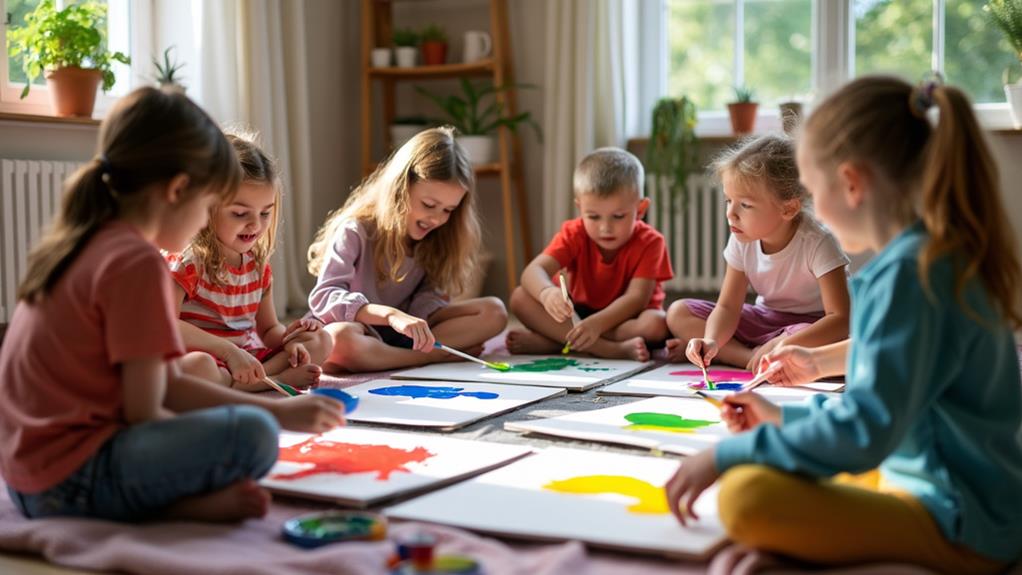
In group art therapy sessions, children can enhance their social interactions and build a peer support network through shared creative activities. These sessions promote emotional expression, fostering a sense of belonging and acceptance vital for emotional development. Participation helps children develop empathy, understanding, social skills, and self-esteem.
Enhancing Social Interaction
Group art therapy sessions provide children with a unique environment to develop their social skills, thereby reducing feelings of isolation and loneliness. Through these sessions, art therapy engages kids in a creative process that naturally fosters interaction. As children collaborate on art projects, they learn to communicate their ideas and emotions more effectively, enhancing their overall communication abilities.
Participating in group therapy offers a supportive space where children can receive peer support. Here, they can share personal stories and feelings without fear of judgment, promoting trust and empathy. This peer support is crucial for emotional development, helping children understand and appreciate the emotions and perspectives of others.
Within the structured group setting, children are encouraged to express their thoughts and feelings related to their artwork. This practice not only improves their communication skills but also fosters a sense of belonging and acceptance. Research indicates that children in group art therapy report increased emotional well-being due to these interactions.
Building Peer Support
Creating a sense of community in group art therapy sessions is crucial for fostering peer support among children. Through shared artistic experiences, kids develop essential social skills and alleviate feelings of isolation. Unlike traditional art classes that focus on technique, art therapy emphasizes emotional expression, enabling deeper connections among participants.
The dynamics of group art therapy are intentionally structured to cultivate a supportive environment where children can freely communicate and share their thoughts. This collaborative art-making process fosters a sense of belonging and acceptance, which is vital for emotional well-being. By interacting with peers, children learn empathy and how to navigate interpersonal relationships, thereby enhancing their emotional resilience.
Peer support is a significant benefit of these sessions. As children express their emotions and observe the contributions of others, they receive affirming feedback that boosts their self-esteem. The shared creative process not only inspires but also helps children feel valued and understood. Overall, the group dynamics in art therapy sessions create a nurturing space where children can grow emotionally and socially, building resilience and improving their self-esteem.
Encouraging Emotional Expression
Building on the peer support established in group art therapy, encouraging emotional expression becomes a natural extension of this collaborative environment. Group therapy sessions foster normal interactions among participants, enhancing communication skills and reducing feelings of isolation in children. When children engage in collaborative art-making, they develop trust and empathy, sharing their experiences and emotions in a supportive setting.
The communal aspect of group therapy promotes a sense of belonging and acceptance, which is crucial for children's emotional growth and resilience. Here, peer support inspires creativity and helps children express themselves freely without judgment. Research indicates that children participating in group art therapy show improvements in emotional regulation and social skills compared to those receiving individual therapy.
The benefits of group art therapy include:
- Enhanced Communication Skills: Children learn to articulate their feelings through art and discussion.
- Improved Social Skills: Interaction with peers helps children navigate social dynamics.
- Emotional Regulation: Art therapy aids in managing and expressing emotions constructively.
- Sense of Belonging: Group settings foster a supportive community.
- Creative Expression: The freedom to create without judgment elevates self-esteem and emotional expression.
Emotional and Creative Growth
Art therapy provides a unique avenue for children's emotional and creative growth by offering a secure environment to express their feelings. By channeling emotions through creative activities, children can enhance their emotional development, reduce anxiety, and improve emotional regulation. This creative engagement also stimulates cognitive growth, bolstering critical thinking, problem-solving abilities, and concentration.
Participating in art therapy builds resilience by helping children manage complex emotions. It promotes imaginative thinking and strengthens coping skills, making them more adaptable. Witnessing their artistic creations come to life often boosts children's self-esteem and instills a sense of accomplishment. The creative process facilitates personal expression, leading to self-discovery and growth.
Additionally, the non-verbal aspect of art therapy is crucial for communication. It allows children to express thoughts and emotions that may be difficult to verbalize, thereby supporting their emotional and social development and helping them forge stronger relationships.
| Benefit | Outcome |
|---|---|
| Emotional Development | Reduced anxiety, improved emotional regulation |
| Creative Exploration | Enhanced cognitive growth |
| Resilience | Improved coping skills |
| Self-Esteem | Greater sense of accomplishment |
Art therapy's non-verbal communication aspect plays a key role in holistic growth.
Real-World Applications
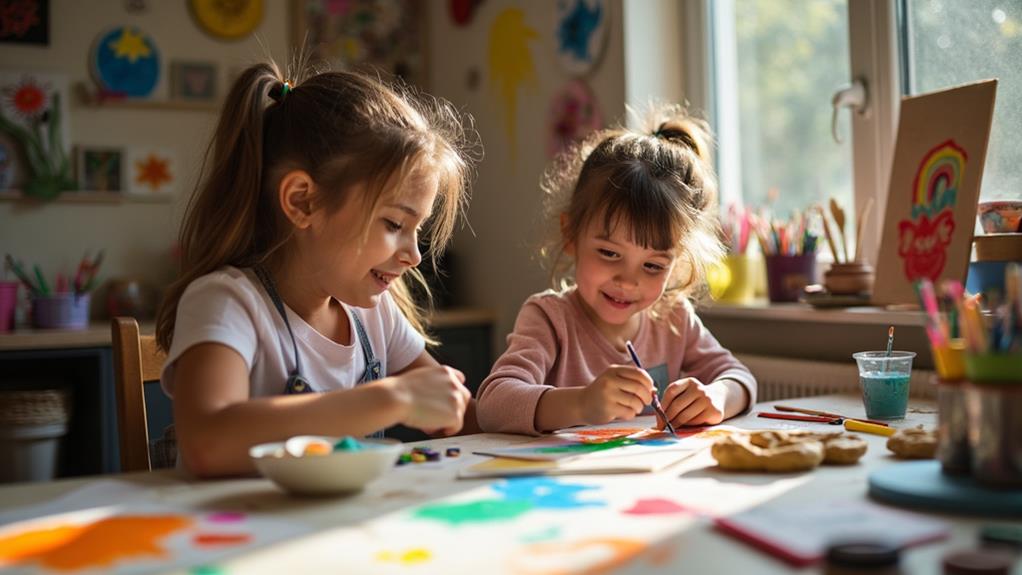
Art therapy has real-world impact through practical techniques such as group sessions that foster peer support and improve communication skills. For example, a pilot study involving 62 children aged 7-10 demonstrated measurable outcomes, including enhanced self-expression and reduced anxiety. These findings underscore how art therapy effectively addresses emotional and behavioral challenges, providing a valuable resource for children.
Practical Therapy Techniques
Harnessing creativity, practical art therapy techniques offer children a unique avenue for emotional expression and development. Activities like drawing, painting, and sculpting allow children to express emotions and thoughts non-verbally, aiding in emotional regulation and improving communication skills. Group art therapy sessions also play a vital role by promoting social interaction and peer support, which enhance social skills and reduce feelings of isolation through shared creative experiences.
One effective technique is polarity drawings, where children visualize and articulate conflicting feelings or perspectives, aiding in emotional clarity and processing difficult experiences. Storytelling through art enables children to improve their narrative skills and engage in imaginative thinking, fostering cognitive development alongside emotional expression. Art therapy provides a safe, structured environment for children to investigate complex emotions, ultimately leading to improved self-esteem and resilience.
Here are some practical techniques for art therapy with children:
- Drawing and painting: Facilitates non-verbal emotional expression and emotional regulation.
- Group sessions: Enhances social interaction and peer support.
- Polarity drawings: Helps visualize and articulate conflicting feelings.
- Storytelling through art: Improves narrative skills and cognitive development.
- Structured environment: Provides a safe space for exploring complex emotions.
Case Study Examples
Real-world applications of art therapy demonstrate its profound impact on children's mental health. For instance, a case study involving children diagnosed with PTSD showed that art therapy significantly reduced their anxiety levels and enhanced their emotional functioning, effectively mitigating trauma-related symptoms. Additionally, a pilot study with 62 children aged 7-10 who experienced mild emotional and behavioral problems revealed that repeated art therapy sessions led to improved self-expression and a sense of empowerment, indicating positive mental health outcomes.
In another instance, a group art therapy intervention for children who were victims of bullying enabled participants to visualize overcoming their adversities, thereby fostering resilience and empathy through the creative process. Research also indicated that art therapy significantly bolstered self-esteem and coping skills in children with learning disorders, showcasing its versatility in addressing a wide range of psychosocial issues.
| Case Study | Outcome | Impact on Children |
|---|---|---|
| Children with PTSD | Reduced anxiety, improved emotional functioning | Addressed trauma-related symptoms |
| Emotional & Behavioral Issues | Improved self-expression, empowerment | Positive mental health outcomes |
| Bullying Victims | Visualized overcoming adversity | Fostered resilience and empathy |
| Learning Disorders | Improved self-esteem, coping skills | Addressed varied psychosocial problems |
A systematic review of 37 studies corroborates these findings, reporting significant improvements in behavioral and emotional functioning, with many children exhibiting reduced aggression and enhanced emotional regulation. These results underscore the value of art therapy as an effective intervention for improving children's mental health and addressing a broad spectrum of psychosocial challenges.
Measurable Outcomes Analysis
Art therapy's measurable outcomes in real-world applications are compelling, demonstrating its effectiveness in enhancing children's mental health. Data reveals that art therapy offers considerable benefits. Specifically, 75% of children who participate in art therapy show positive changes in emotional functioning, including significant reductions in anxiety and notable improvements in self-esteem.
The impact on behavioral issues is also substantial. Research shows that art therapy can result in a 50% reduction in externalizing behaviors, such as aggression, compared to control groups. This is crucial for children facing psychosocial challenges, as it aids in improving their coping skills and emotional regulation.
Key measurable outcomes include:
- Self-esteem: 75% of children experience improvements.
- Emotional functioning: Significant reductions in anxiety.
- Behavioral issues: 50% decrease in externalizing behaviors.
- Psychosocial problems: Enhanced coping skills and emotional regulation.
- Qualitative outcomes: Over 80% of children report feelings of safety and optimism.
Future Research Directions
In future research on art therapy for children, it is essential to investigate how different art materials uniquely impact therapeutic outcomes. Various mediums facilitate distinct levels of emotional expression and engagement, influencing the therapy's effectiveness. Longitudinal studies can evaluate the long-term effects of these interventions on children's mental health, especially regarding sustained improvements in emotional and behavioral functioning.
Using more rigorous methodological designs, such as larger sample sizes and randomized controlled trials, will enhance the validity of the findings. This approach can verify how art therapy addresses children's psychosocial issues. Qualitative research is also crucial for capturing the nuanced experiences of children in art therapy. Understanding their personal stories can provide deeper insights into the therapeutic processes and impacts.
Additionally, exploring the effectiveness of art therapy in diverse settings, such as schools and community centers, can yield valuable information on its accessibility and adaptability. This broader perspective can help tailor art therapy programs to meet the diverse needs of different populations, ultimately enhancing its overall effectiveness.



